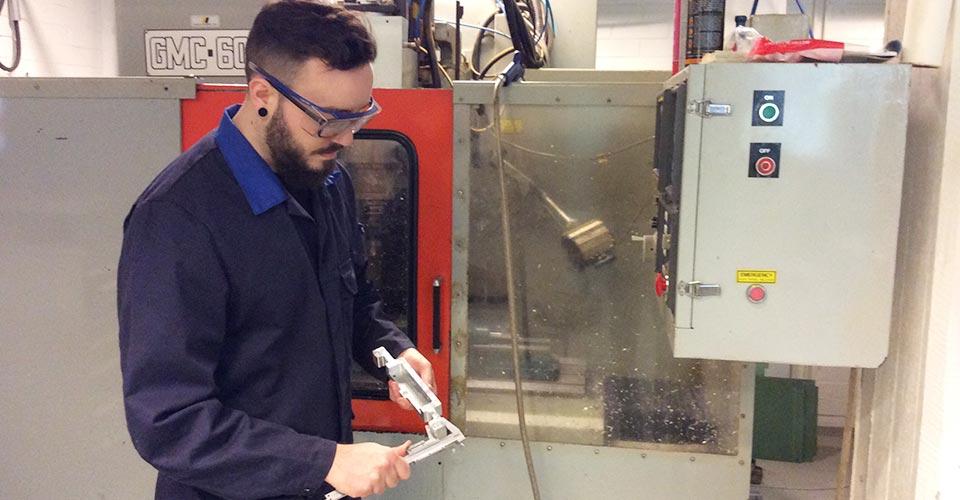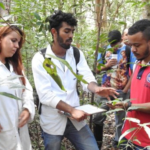
Tapio Väisänen
As of 2014, Häme University of Applied Sciences (HAMK) has been moving towards a module-based study structure. Studies are divided into modules, each worth 15 credits, in which key information and skills of the study field are learned. In this new model, the independent study entities of the former study structure have been combined into larger entities that consist of parts supporting each other. One module lasts eight weeks, and students participate in one module at a time. Often, there is a module project serving as the common thread to support learning. A team of around three teachers is in charge of the implementation of the module.
For instance, the following benefits are obtained in the module model:
- Students will understand the links between different subject areas more easily.
- Students are able to concentrate on one module at a time.
- Modules can consist of larger learning assignments than just individual courses or study entities.
- Teamwork between teachers is more fruitful and motivating than when working alone.
The short duration of modules forms a challenge. Therefore, it is vital that the learning assignments are carefully planned and prepared so that the module can be successfully implemented. On the other hand, the short duration teaches students to adopt a business-like mentality, as business schedules are typically very tight.
Case Workshop Automation
In spring 2017, a module called Workshop Automation was conducted in the the English-taught degree programme in Mechanical Engineering and Production Technology at the Riihimäki campus of Häme University of Applied Sciences. Its learning objectives were strongly tied to the programming and use of numerically controlled machine tools. The starting point was to get actual production units from companies. A previous collaboration with a Hyvinkää-based company called Elkome Installaatiot Oy sparked the idea that their products might include fabricable parts that are challenging enough. Elkome Installaatiot Oy was interested in the project, and the project was agreed on. Together with the company, a few aluminium parts were selected to be manufactured during the project. The company delivered images and 3D models to HAMK. These parts were manufactured for the “shelf”, i.e. there was no acute need or tight timing requirements for them. Instead, they would be used for future assemblies. This was an excellent situation for HAMK as perfect delivery reliability cannot always be guaranteed in student projects.
The project was initiated with students already during the first week of the module. The students were divided into small groups of around four persons. Each group received their own assignment. First, the 3D models received from the company were imported into the software that was used to generate the toolpaths needed for milling. During the first few weeks, the students generated toolpaths for parts and, at the same time, studied matters related to numerical control (NC) programming. When the groups were finished with the NC programs, they moved to the mechanical engineering laboratory to machine their parts. The teachers of the module supported and helped the groups both with NC programming and machining the parts.
Experiences
As a result of the project, finished parts, the quality of which varied from one group to another, were delivered to Elkome Installaatiot Oy. Some parts were eligible for installation, other parts had defects. The principle of learning from mistakes functioned well during the project. For companies, this type of project is relatively uncomplicated. After the kick-off meeting, no efforts were required from the company, and the next meeting concerned deliverables and closing the project. Elkome Installaatiot Oy was satisfied with the collaboration and is willing to be involved in projects like this also in the future. “In addition, we familiarised ourselves with some other forms of services provided by Häme University of Applied Sciences, and there is a possibility that the collaboration will be broadened in the future,” comments Mikko Tammiranta from Elkome Installaatiot Oy.
From the students’ point of view, a customer-oriented project promotes learning and brings an entrepreneur-like approach to studies. Already during studies, students get to perform similar tasks and encounter similar challenges that they will encounter at work after graduation. In their feedback, students mentioned that the project supported very well other related studies and that the module project is the best way to learn how things happen and are done at the workplace.
A customer-oriented module project is rewarding not only to students but also to the customer and teachers of the module. In order for the project to be successfully completed, careful planning and preparing is required from the teachers. However, the benefits are multiple – students make progress in their learning, there is more cooperation with companies, and thus there is strong regional impact. Furthermore, teachers’ professional skills and interest in their work increase.
This article was originally published as Työelämälähtöisessä moduuliprojektissa voittavat kaikki osapuolet in Finnish in August 2017.
Author
Tapio Väisänen, Lic.Sc. (Tech.), is Principal Lecturer in the Mechanical Engineering and Production Technology degree programme at Häme University of Applied Sciences (HAMK).





